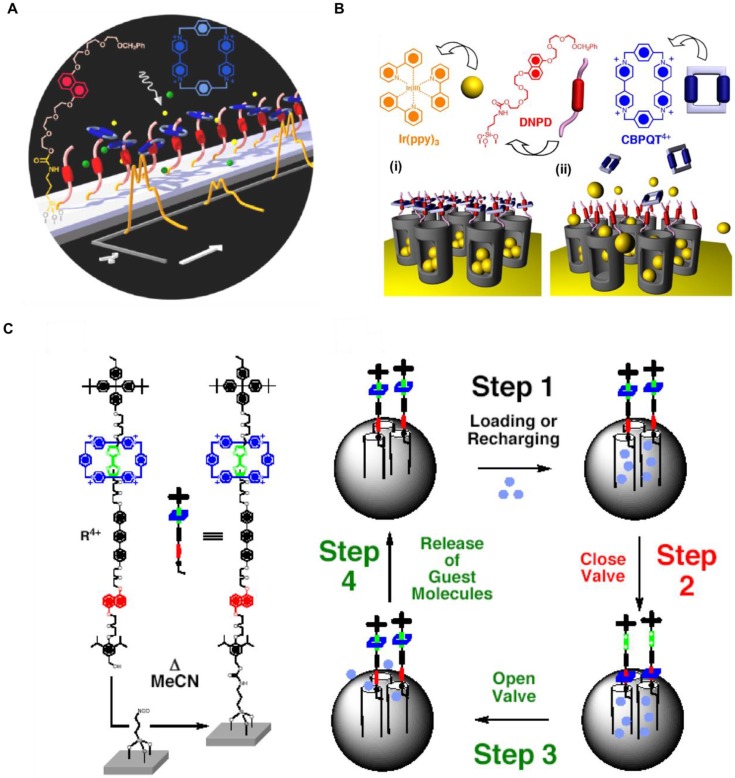Figure 1.
(A) A pseudorotaxane on a solid silica support. Reprinted with permission from 13, copyright (2001) Angew. Chemie - Int. Ed. (B) Graphical representations of operation of nanovalves gating the pore openings on silica particles. (i) The orifices of the nanopores (diameter 2 nm) are covered with pseudorotaxanes (formed between DNPD and CBPQT4+) which trap the luminescent Ir(ppy)3 molecules inside the nanopores. (ii) Upon their reduction, the CBPQT2+ bisradical dications are released and allow the Ir(ppy)3 to escape. Reprinted with permission from 14, copyright (2004) J. Am. Chem. Soc. (C) Graphical representations of the surface attachment of bistable rotaxanes to silica particles along with a cycle for loading and release of guest molecules. Left: The structural formula of the bistable [2]rotaxane R4+ and the procedure used for tethering R4+ to the surface of mesoporous silica particles. Right: The proposed mechanism for the operation of the nanovalve. The moving part of the molecular valve is a CBPQT4+ ring (blue), which shuttles between a TTF station (green) and a DNP station (red) under redox control. The openings of the cylindrical pores on the silica are blocked by the CBPQT4+ ring when the valve is closed. Guest molecules (turquoise spheres) are loaded in Step 1 by diffusion into the open pores when the CBPQT4+ ring is located on the TTF station. The valve is closed in Step 2 by oxidation of the TTF unit to its dication, causing the CBPQT4+ ring to move to the DNP station, which is much closer to the openings of the pores. The valve can be opened (Step 3) by adding ascorbic acid to reduce the TTF dication back to its neutral state, whereupon the CBPQT4+ ring moves back from the DNP station to be relocated around the much more π electron-rich TTF station, releasing the guest molecules in Step 4. The valve is ready for recharging (i.e., returning to Step 1). Thus, the valve can be closed and opened reversibly. The silica particles are not drawn to scale, and only a few of the ordered pores are shown. Reprinted from 15, copyright (2005) Proc. Natl. Acad. Sci.

